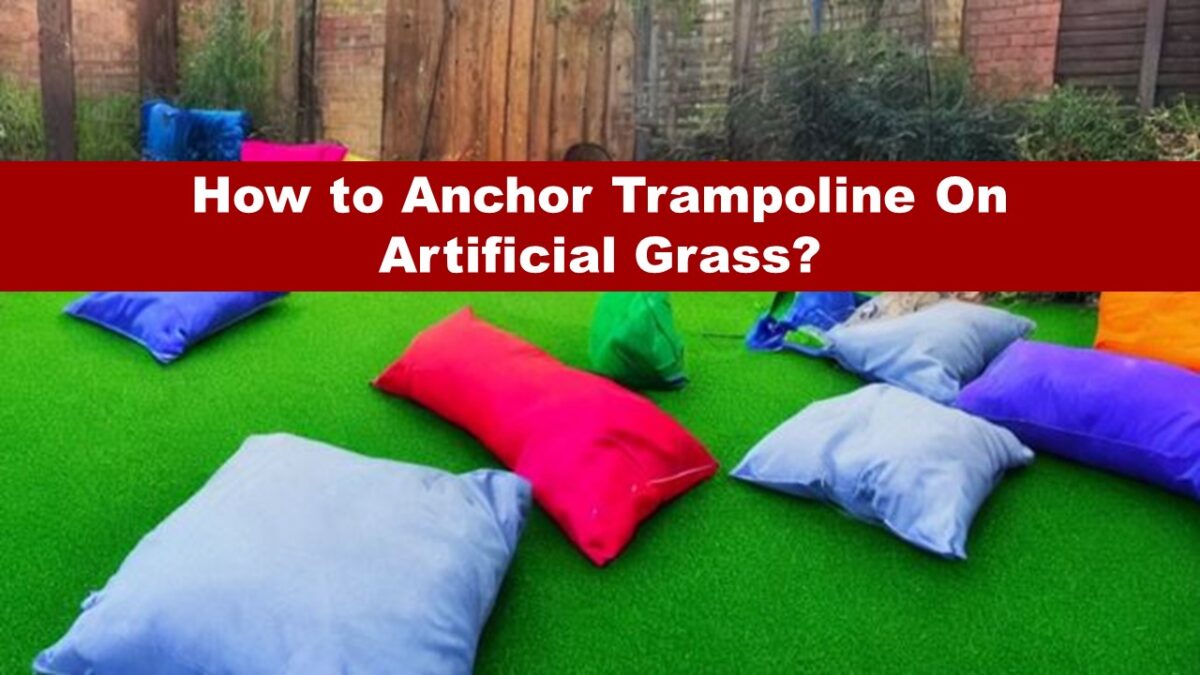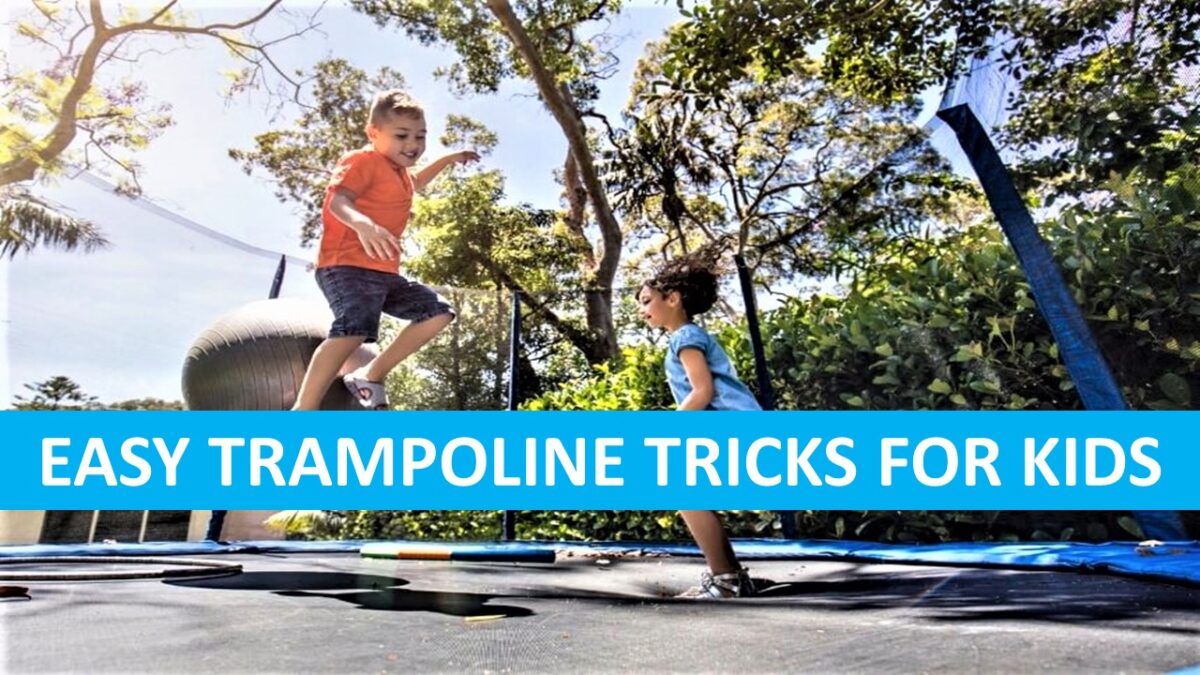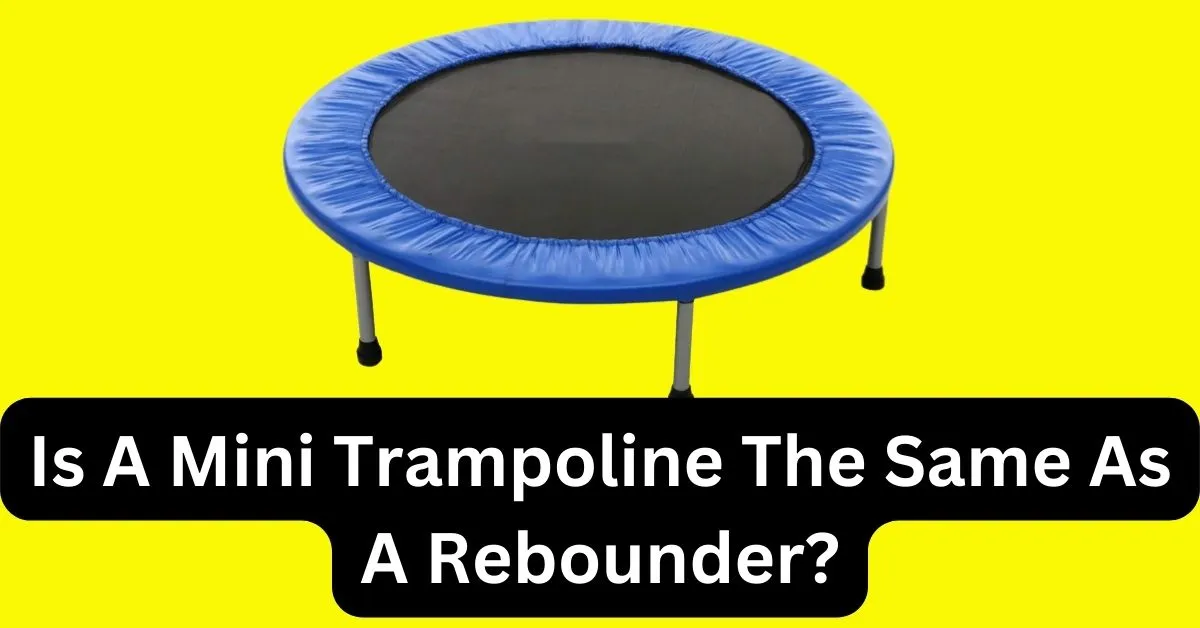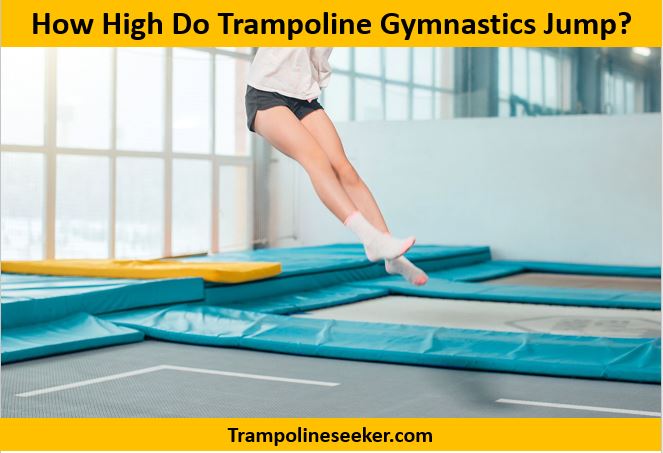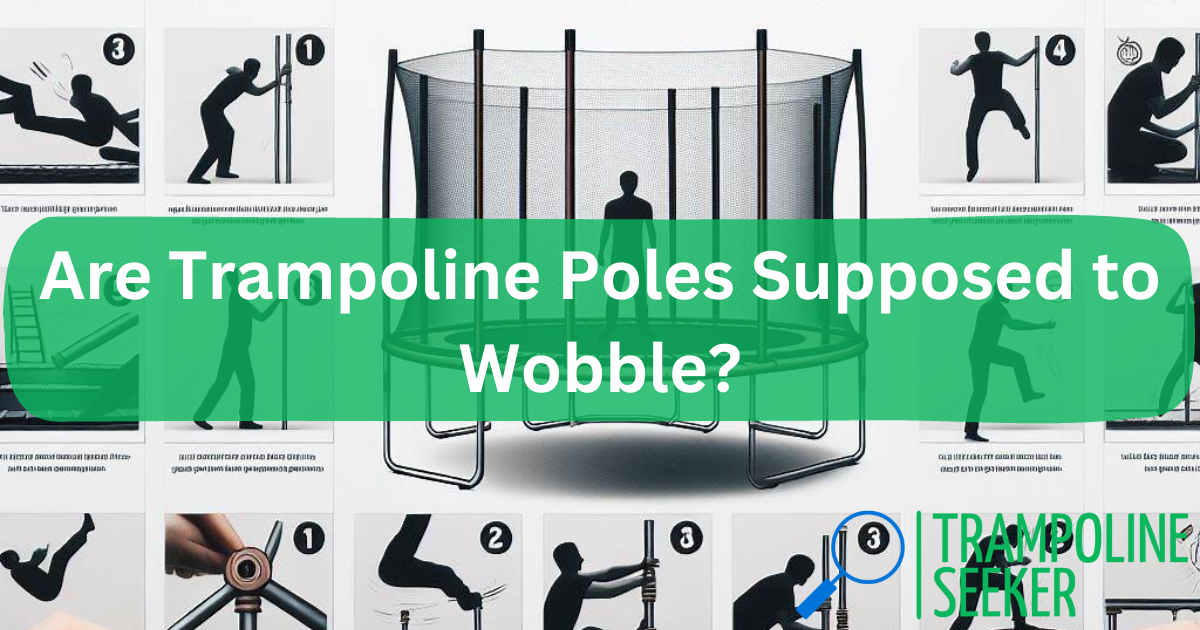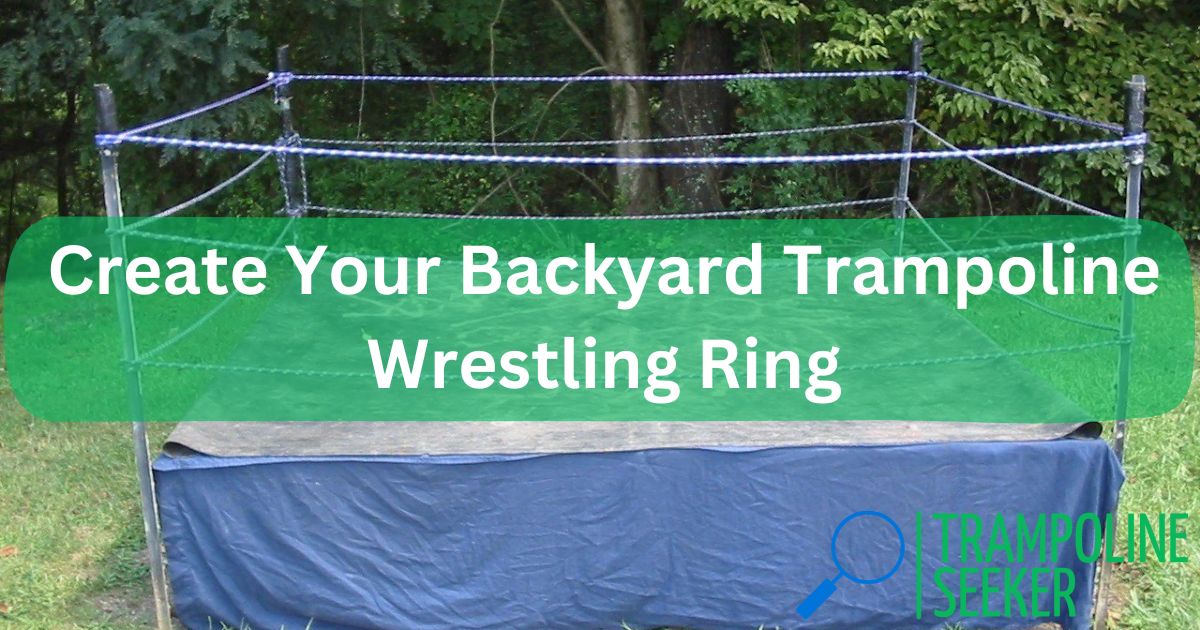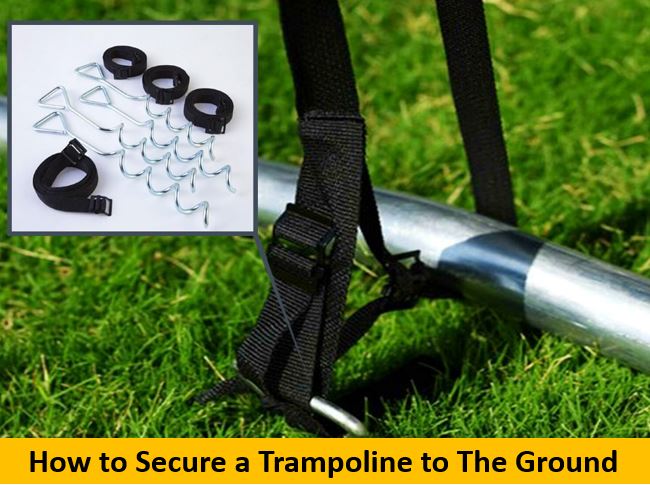Trampolines are designed for fun – to let kids (and kids at heart!) bounce to their heart’s content, pull off exciting tricks, or just burn off some energy. However, they do experience wear and tear over time leading to breaks, tears and rips. 😢 Understanding the reasons this happens is key to preventing damage and keeping your trampoline safe for jumping!
As an experienced trampoline owner, I want to share the insight I’ve gained over the years on why trampolines break, tear and rip.
In short, trampolines face damage from inferior quality materials, lack of maintenance, improper use, extreme weather exposure, and poor assembly. Key prevention tips involve choosing durable construction, enforcing jumper safety rules, utilizing weather protection when not in use, performing routine inspections, timely repairs, and proper initial setup.
Let’s start by looking at some of the main causes, then we’ll get into how to help prevent these issues from occurring.🤓
What Causes Trampolines to Break, Tear and Rip? 🤔

There are 5 primary reasons trampolines become damaged:
1. Inferior Quality Materials⛔

The quality of the materials used in manufacturing trampolines makes a big difference in their durability. ⚖️ Cheaper trampolines often use less galvanized steel in frames, lighter weight springs, and basic mat fabrics. These components then deteriorate faster from normal use and exposure to sun and moisture.
Spending more upfront for a trampoline made with heavy duty galvanized steel frames, thick gauge rust-resistant springs, and tightly woven UV protective mat fabrics pays off in added years of safe usage.
2. Lack of Routine Maintenance❌

Trampolines require regular inspection and basic care to remain in good shape. Checking for frays, holes, loose parts, rust and unusual stretch or sag only takes a few minutes. ⏱️ But skipping this routine step allows tiny issues to become big problems that shorten the usable life of your trampoline.
Protecting the mat and springs from excessive sun and moisture deterioration through strategic shade placement, weather covers, and off-season storage also reduces wear. A little trampoline TLC goes a long way!
3. Improper Use 🙅♂️

When trampolines aren’t used as intended by the manufacturer major issues can develop. Letting kids play rough games that stress components beyond capacity, failing to enforce rules about attire and behaviors, or exceeding weight limits on the mat leads to damage.
Following all use guidelines and rules helps prevent premature and dangerous breaks, tears and rips. This keeps the trampoline functioning properly and kids safe!
4. Extreme Weather Exposure🌪️

Trampolines live outside and contend with all types of weather all year round. From harsh summer UV rays to freezing winter temps and blustery spring winds, exposure deterioration is inevitable even with the best constructed trampolines.
But strategic placement in sheltered areas and proper use of weather covers, off-season storage solutions and routine maintenance checks minimizes the impacts for longer usable life.
5. Poor Initial Assembly 🛠️

Putting together a trampoline might seem straightforward enough, but mistakes during initial assembly can lead to later breaks and failures. Missing pieces, loose joinings, over-stretched components and improper alignment cause added stress.
Carefully following manufacturer assembly directions, checking work thoroughly at each step, and properly anchoring the frame reduces these errors. This prevents unnecessary damage down the road.
Now that we’ve covered the primary reasons why trampolines break, tear and rip, let’s discuss some key ways to help prevent it. 👍
How to Prevent Trampoline Breaks, Tears & Rips
While some trampoline damage is inevitable over years of use, focusing on these 6 areas reduces the likelihood and frequency of issues cropping up:
🛍️ Choose Quality Materials
When shopping for a trampoline, prioritize quality over bargain pricing. Well-constructed galvanized steel frames, thick sturdy springs, and tightly woven UV-resistant mat materials made to handle weather and active jumping stand the test of time.
☀️ Utilize Weather Protection
Shield your trampoline from sun and moisture whenever possible through strategic shade placement, weather resistant covers when not in use and off-season breakdown and storage. Limiting exposure deterioration preserves components.
🧐 Perform Routine Checks
Get in the habit of quick visual inspections and basic upkeep before and after each trampoline use. Watch for any frays, holes, soft spots, loose parts, sagging, odd bounces or other red flags so minor issues don’t escalate.
🚷 Enforce Safety Rules
Ensure proper use guidelines are followed at all times. Forbid rough play that stresses materials, limit bouncer number/weight, require appropriate footwear and attire that won’t damage the surface. Jumper security and equipment longevity go hand-in-hand.
⚙️ Assemble Properly
Correct construction as specified by the manufacturer is vital for performance and durability. Missing parts, inadequate joinings and poor alignment during initial setup causes hidden weaknesses. Anchor securely too.
🪛 Make Timely Repairs
Address any minor damage immediately using quality replacement parts so deterioration doesn’t spread. But know when it makes sense to invest in a new trampoline too.
Conclusion⏯️
Why trampolines break, tear and rip boils down to 5 key factors – inferior quality materials, lack of maintenance, improper use, extreme weathering and poor assembly. While some deterioration is expected over years of use, focusing on prevention techniques in these areas reduces risks substantially.
Prioritizing top-notch UV and weather-resistant components, consistent care and upkeep, safe jumper rules enforcement, covered storage solutions and timely repairs ensures your trampoline stays elastic, structurally sound and safe for bouncing bliss! 🤸♂️
I hope this overview on reasons trampolines break down and tips to maximize their lifespan helps you make the most of your trampoline investment. Drop any other trampoline care wisdom in the comments below! 👇
Frequently Asked Questions about Trampolines Breaking, Tearing and Ripping
Can jumping in shoes cause a trampoline to rip?
Yes! Hard-soled shoes or ones with pebbles lodged in the tread can damage the woven material of the bouncing mat leading to fraying and tears after repeated use. Requiring bare feet or grip socks is best practice.
Are circular or rectangle trampolines more prone to damage?
There’s no significant difference regarding overall durability and risk of breaks, tears or rips. Shape doesn’t impact lifespan as much as quality of materials, usage and weathering do. Both styles have pros and cons for other factors.
Should I worry about cold weather making my trampoline break?
Winter temps causing outright breaks is uncommon if assembled correctly. But the repeated contraction and expansion of materials in extreme cold can accelerate microscopic fraying. Use weather covers and avoid use during freeze periods just to be safe.
Can leaving a trampoline outside year-round lead to tears?
Absolutely! Permanent outdoor exposure subjects it to more intense and prolonged UV radiation, heat expansion, wild temperature shifts, precipitation erosion and seasonal storms. These worsen deterioration so off-season breakdown is best if possible.
How can I tell if my trampoline rip or tear is too big to safely fix at home?
As a general rule of thumb, tears under about 2 inches can be effectively patched at home but larger ones require more advanced sewing equipment and tensioning knowledge. Watch for fraying edges too. When in doubt, call the pros for repair guidance or just replace the mat.
Articles You May Like to Read:


